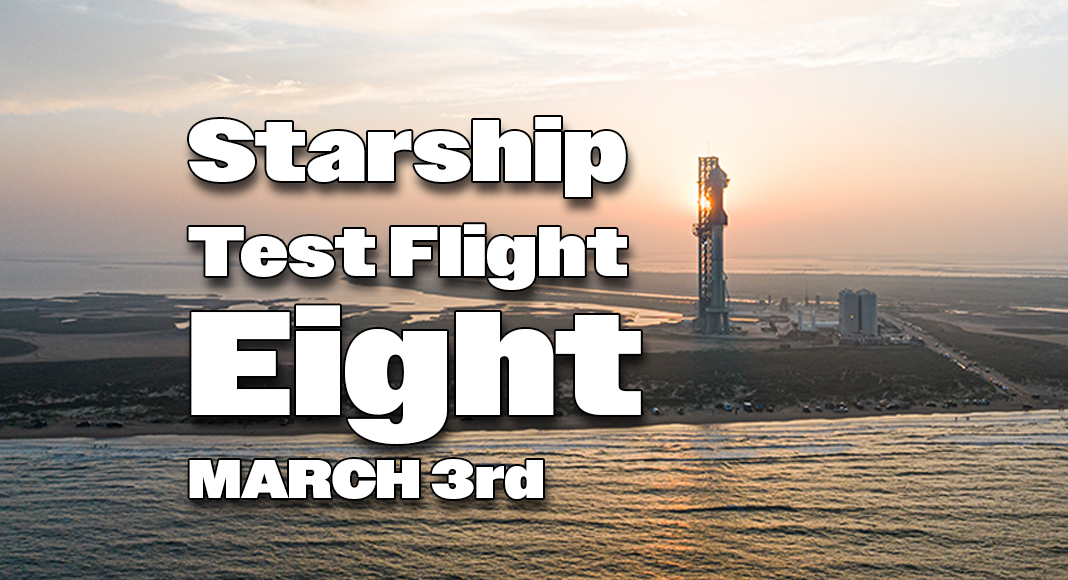
Texas Border Business
A live webcast of the flight test will begin about 40 minutes before liftoff, which you can watch here and on X @SpaceX. You can also watch the webcast on the X TV app. The launch window will open at 5:30 p.m. CT. As is the case with all developmental testing, the schedule is dynamic and likely to change, so be sure to check in here and stay tuned to our X account for updates.
After completing the investigation into the loss of Starship early on its seventh flight test, several hardware and operational changes have been made to increase reliability of the upper stage. You can read the full summary of the mishap investigation here.
The upcoming flight will target objectives not reached on the previous test, including Starship’s first payload deployment and multiple reentry experiments geared towards returning the upper stage to the launch site for catch. The flight also includes the launch, return, and catch of the Super Heavy booster.
Extensive upgrades to Starship’s upper stage debuted on the previous flight test, focused on adding reliability and performance across all phases of flight. Starship’s forward flaps have been upgraded to significantly reduce their exposure to reentry heating while simplifying the underlying mechanisms and protective tiling. Redesigns to the propulsion system, including a 25 percent increase in propellant volume over previous generations, add additional vehicle performance and the ability to fly longer duration missions. And the vehicle’s avionics underwent a complete redesign, adding additional capability and redundancy for increasingly complex missions like propellant transfer and ship return to the launch site.
During the flight test, Starship will deploy four Starlink simulators, similar in size to next-generation Starlink satellites, as the first exercise of a satellite deploy mission. The Starlink simulators will be on the same suborbital trajectory as Starship and are expected to demise upon entry. A relight of a single Raptor engine while in space is also planned.
The flight test includes several experiments focused on enabling Starship’s upper stage to return to the launch site. A significant number of tiles have been removed from Starship to stress-test vulnerable areas across the vehicle. Multiple metallic tile options, including one with active cooling, will test alternative materials for protecting Starship during reentry. On the sides of the vehicle, non-structural versions of Starship’s catch fittings are installed to test the fittings’ thermal performance, along with a section of the tile line receiving a smoothed and tapered edge to address hot spots observed during reentry on Starship’s sixth flight test. Starship’s reentry profile is designed to intentionally stress the structural limits of the upper stage’s rear flaps while at the point of maximum entry dynamic pressure. Finally, several radar sensors will once again be tested on the launch and catch tower’s chopsticks with the goal of increasing the accuracy when measuring distances between the chopsticks and a returning vehicle.
The Super Heavy booster for this flight features upgraded avionics, including a more powerful flight computer, improved power and network distribution, and integrated smart batteries.
Distinct vehicle and pad criteria must be met prior to the return and catch of the Super Heavy booster, requiring healthy systems on the booster and tower and a final manual command from the mission’s Flight Director. If this command is not sent prior to the completion of the boostback burn, or if automated health checks show unacceptable conditions with Super Heavy or the tower, the booster will default to a trajectory for a soft splashdown in the Gulf of America. We accept no compromises when it comes to ensuring the safety of the public and our team, and booster return will only take place if conditions are right.
The returning booster will slow down from supersonic speeds, resulting in audible sonic booms in the area around the landing zone. Generally, the only impact to those in the surrounding area of a sonic boom is the brief thunder-like noise with variables like weather and distance from the return site determining the magnitude experienced by observers.
Developmental testing by definition is unpredictable. But by putting flight hardware in a flight environment as frequently as possible, we’re able to quickly learn and execute design changes as we seek to bring Starship online as a fully and rapidly reusable vehicle.
Information sourde: SpaceX










